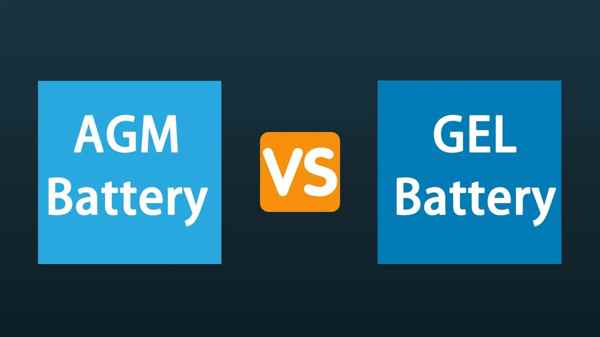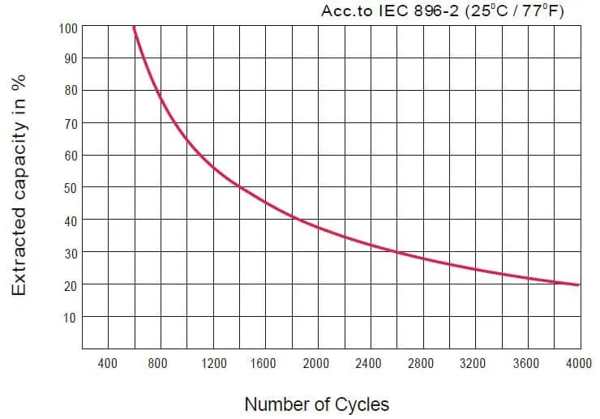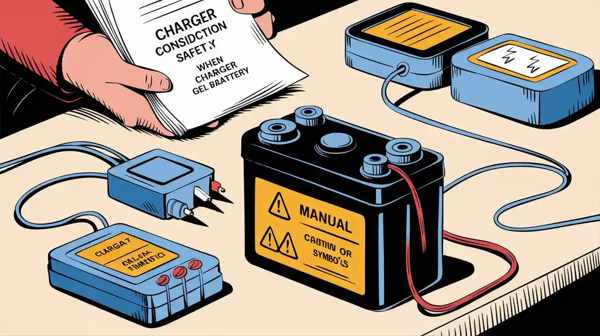Wat beter is, een AGM- of gelbatterij?
Als u op zoek bent naar een betrouwbare, onderhoudsvrije batterij voor uw zonnestelsel, boot, of back -upkracht, Je zult snel twee populaire opties tegenkomen: AGM en gel. Het zijn beide soorten verzegelde loodzuurbatterijen, Maar ze gebruiken intern verschillende technologieën, waardoor ze beter geschikt zijn voor verschillende banen. Dus, welke is echt beter?
AGM noch gel is universeel "beter"; De beste keuze hangt af van uw specifieke applicatie. In het kort, AGM (Absorberende glasmat) Batterijen zijn over het algemeen beter voor toepassingen die een hoog vermogen vereisen (zoals het starten van een motor) en sneller opladen.gelbatterijen blinken vaak langzaam uit, Diepontwerptoepassingen en kunnen meer tolerant zijn voor zeer hoge omgevingstemperaturen.

Bij GYCX Solar, We werken met een breed scala aan batterijtechnologieën, En onze expertise ligt in het matchen van de juiste batterij met de juiste baan. Laten we de verschillen tussen AGM en gel afbreken om u te helpen een weloverwogen beslissing te nemen.
Zijn AGM-batterijen loodzuur of gel?
Met alle acroniemen, Het is gemakkelijk om in de war te raken. Zijn AGM- en gel concurrerende technologieën, of zijn ze gerelateerd? Laten we de stamboom van de batterij verduidelijken.
AGM -batterijen zijn een soort loodhof accu, Maar dat zijn ze niet Gelbatterijen. Denk aan "lead-ocid" als de belangrijkste familienaam. Onder die familie, Je hebt twee hoofdtakken: traditioneel "overstroomd" batterijen (die onderhoud nodig hebben) en "verzegelde loodzuur" of VRLA -batterijen (die onderhoudsvrij zijn). Zowel AGM als gel zijn twee verschillende soorten verzegelde VRLA -batterijen. Het belangrijkste verschil tussen hen is hoe ze de zure elektrolyt van binnen immobiliseren.

Duik dieper: Een snelle gids voor de terminologie
- Loodzure batterij: De algemene batterijcategorie die loodplaten en een zwavelzuur -elektrolyt gebruikt.
- Overstroomde loodzuur (FLA): De traditionele, "Wetcel" type. De loodplaten zijn ondergedompeld in vloeistofzuur, en het vereist regelmatig bijvullen met gedestilleerd water.
- Verzegelde loodzuur (VRLA-Klep gereguleerde loodzuur): De onderhoudsvrije categorie. De batterij is verzegeld, en interne gassen worden gerecombineerd.
- AGM (Absorberende glasmat): Het zuur wordt geabsorbeerd en op zijn plaats gehouden door zeer fijne glasvezelmatten die tussen de loodplaten zijn ingeklemd.
- Gel: Het zuur wordt gemengd met siliciumdamp om een dik te creëren, viskeuze gel die niet stroomt.
Dus, terwijl beide zijn verzegeld en onderhoudsvrij zijn, De methode die ze gebruiken om het zuur te bevatten, geeft ze verschillende prestatiekenmerken.
Hoe te zeggen of batterij AGM of gel is?
Je hebt een verzegelde loodzuurbatterij, Maar je weet niet zeker of het een AGM of een gel is. Het verschil weten is van cruciaal belang omdat ze verschillende laadprofielen vereisen. Hoe kunt u identificeren welk type u heeft?
De meest betrouwbare manier om te zien of een batterij AGM of gel is Lees het etiket op de batterijbehuizing. De meeste fabrikanten zullen duidelijk "AGM afdrukken," "Absorberende glasmat," "Gel," of "gelcel" op de sticker. Als het label is gedragen of onduidelijk, Je volgende beste stap is om Zoek het modelnummer online op Op de website van de fabrikant. De beoogde toepassing van het product kan ook een aanwijzing zijn.

Duik dieper: Uw identificatiechecklist
Hier zijn de stappen om uw batterijtype te identificeren:
- Lees het label aandachtig: Dit is de meest directe methode. Zoek naar de technologische naam. Soms kan het gewoon zeggen: "VRLA" of "verzegelde loodzuur," in welk geval u mogelijk dieper moet graven.
- Zoek het modelnummer: Elke batterij heeft een modelnummer (Bijv., "8a31dt" of "GPL-31T"). Een snelle internetzoeking naar dat modelnummer leidt u bijna altijd naar een productpagina of technisch gegevensblad dat de chemie specificeert.
- Overweeg de oorspronkelijke applicatie:
- AGM -batterijen zijn uitstekend in het leveren van hoge stroom, Ze zijn dus heel gebruikelijk in high-performance voertuigen met start-stop-technologie, Auto's met krachtige audiosystemen, en voor het starten van mariene of campermotor.
- Gelbatterijen blinken uit bij langzaam, stabiel, Diepe ontladingen. Ze worden vaak gevonden in scooters van elektrische mobiliteit, aangedreven rolstoelen, en sommige telecom- of off-grid zonnetoepassingen.
- Waarom het van cruciaal belang is om te weten: U moet het type weten om het juiste oplaadprofiel op uw slimme oplader of zonnekostencontroller te selecteren. Een AGM -instelling gebruiken op een gelbatterij (of vice versa) kan leiden tot onderlading of overladen, die beide de levensduur van de batterij zullen verkorten.
Wat is de levensduur van een gelbatterij?
Wanneer u investeert in een gelbatterij1, je wilt weten hoeveel Jarenlang2 je kunt verwachten. Met de juiste zorg en de juiste omstandigheden, Ze kunnen duurzame artiesten zijn, Maar hun leven is eindig.
Een hoogwaardige diepe cyclusgelbatterij heeft meestal een kalenderleven van 5 naar 10 jaren. In termen van gebruik, het kan overal leveren, van 500 naar over 1,000 lading-ontladingscycli. Deze levensduur is niet gegarandeerd en is sterk afhankelijk van verschillende kritieke factoren, het meest opvallend correct opladen, bedrijfstemperatuur, en hoe diep het wordt ontslagen regelmatig.

Duik dieper: Factoren die de levensduur bepalen
De werkelijke levensduur die u van uw gelbatterij krijgt, wordt bepaald door deze belangrijke variabelen:
- Laadmethode: Zoals we volgende zullen bespreken, Het gebruik van het juiste gelspecifieke laadprofiel is de belangrijkste factor. Consistent overladen of onderlading zal de levensduur van de batterij drastisch verkorten.
- Bedrijfstemperatuur: Warmte is de vijand van alle batterijen van loodzuur. De ideale bedrijfstemperatuur is ongeveer 25 ° C (77° F). In een consistent heet klimaat zoals die van Bangkok, Een batterij die in een slecht geventileerde ruimte wordt bewaard, kan de levensduur van de service in tweeën snijden.
- Diepte van ontlading (DoD): Dit verwijst naar hoeveel van de capaciteit van de batterij u in elke cyclus gebruikt. Een batterij die alleen wordt ontslagen 30% van zijn capaciteit zal voor veel meer cycli duren dan een die consequent wordt ontslagen 80%.
- Hoe het vergelijkt:
- vs. AGM: De levensduur van AGM- en gelbatterijen is vaak vergelijkbaar wanneer beide goed worden behandeld, Hoewel gel soms een lichte voorsprong kan bieden in de fietsleven voor langzaam, Diepe ontladingen, terwijl het minder tolerant is voor onjuist opladen.
- vs. Lithium (LFP): Het verschil is aanzienlijk. Een moderne LFP -batterij, die GYCX Solar vaak aanbeveelt voor zonne -energie, biedt een veel langer leven (10-20 jaren en 3,000-6,000+ cycli), waardoor het een superieure investering op lange termijn is voor dagelijkse fietstoepassingen.
Heeft een gelbatterij een speciale oplader nodig?
Je hebt een gelbatterij gekozen voor zijn Onderhoudsvrije voordelen3. Kun je gewoon elke standaard batterijlader gebruiken om hem bijgevuld te houden?? Dit is een kritiek punt waar een fout erg duur kan zijn.
Ja, absoluut. Gelbatterijen vereisen een compatibele slimme oplader die een specifiek heeft "GEL" laadprofiel. Het gebruik van een standaardlader die is ontworpen voor traditionele overstroomde auto of dieptecyclusbatterijen zal na verloop van tijd vrijwel zeker een gelbatterij beschadigen of vernietigen. De laadspanning en algoritme moeten nauwkeurig worden gekoppeld aan de gelchemie om de gezondheid en een lange levensduur te waarborgen.

Duik dieper: Waarom de juiste oplader niet onderhandelbaar is
Dit is de reden waarom een gel-compatibele oplader essentieel is:
- Voorkomt overspanning: Gelbatterijen zijn erg gevoelig voor hoge spanning. Een goed gelprofiel maakt gebruik van setpoints met lagere spanningen (meestal rond 14.1V - 14.4V uit). Een standaard overstroomde batterijlader kan de spanning duwen tot 14,8 V of hoger, die "koken" de gel.
- Vermijdt destructieve egalisatie: Veel opladers voor overstroomde batterijen hebben een "egalisatie" modus, die een gecontroleerde overbelasting is die is ontworpen om de cellen in evenwicht te brengen. Dit proces is zeer destructief voor een gelbatterij. Het zorgt ervoor dat het water in de gelelektrolyt afbreekt in gas dat uit de batterij is ontlucht. Omdat je geen water kunt toevoegen, Dit droogt de gel permanent uit, zijn capaciteit verpesten.
- Multi-fase opladen: Een slimme oplader met een gelprofiel maakt gebruik van een multi-fase algoritme (Bijv., bulk, absorptie, vlot) dat is precies afgestemd op wat een gelbatterij nodig heeft. Het laadt efficiënt op en valt vervolgens naar een veilige "float" spanning om de batterij te behouden zonder deze te veel in rekening brengen.
- AGM is ook anders: Het is belangrijk op te merken dat AGM -batterijen ook hun eigen specifieke oplaadprofiel hebben, die anders is dan zowel gel als overstroomd. Een goede lader voor meerdere chemiek zal voor elk afzonderlijke instellingen hebben.
GYCX Solar Story: "We vertellen onze klanten altijd dat de lader net zo belangrijk is als de batterij zelf. Wanneer we een systeem ontwerpen, Of het nu gaat om zonne- of back -upkracht, We zorgen ervoor dat de zonnekostencontroller of AC -oplader perfect is geprogrammeerd voor de gebruikte batterijtechnologie. Dit beschermt de investering van de klant en is een belangrijk onderdeel van ons professionele voordeel."
Dus, wat beter is, AGM of gel? Het is een afweging. AGM is fantastisch, veelzijdig werkpaard, Geweldig voor zowel krachtige als diepe cyclusgebruik. Gel is een gespecialiseerde dieptecyclus-artiest die duurzamer kan zijn in zeer hete klimaten, maar meer precieze opladen vereist. Voor veel moderne zonnetoepassingen, Het gesprek omvat nu LFP Lithium, die een superieure levensduur en prestaties biedt.
Bij Gycx Solar, We hebben de expertise om u te helpen bij het navigeren van deze keuzes. We kunnen uw behoeften analyseren om de batterijtechnologie aan te bevelen - of het AGM is, Gel, of lithium - dat biedt de beste waarde en prestaties voor uw specifieke applicatie. Neem vandaag nog contact met ons op voor een professioneel consult!
Inzicht in de levensduur van gelbatterijen kan u helpen geïnformeerde investeringsbeslissingen te nemen. ↩
Het verkennen van dit onderwerp zal inzicht geven in de levensduur en betrouwbaarheid van gelbatterijen. ↩
Het verkennen van de onderhoudsvrije voordelen kan u helpen de voordelen van het kiezen van gelbatterijen boven anderen te waarderen. ↩
